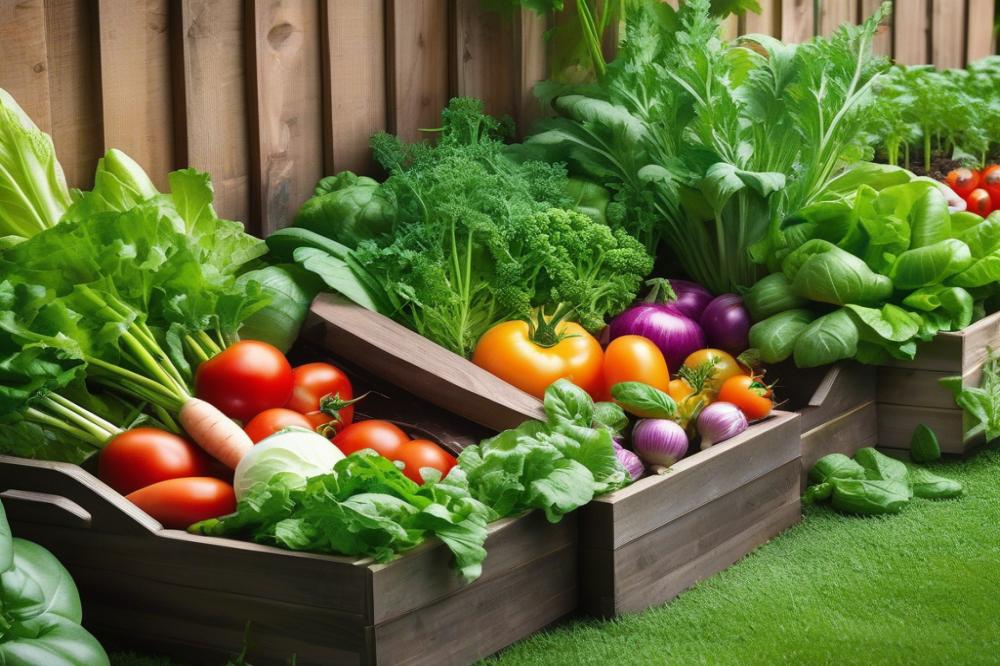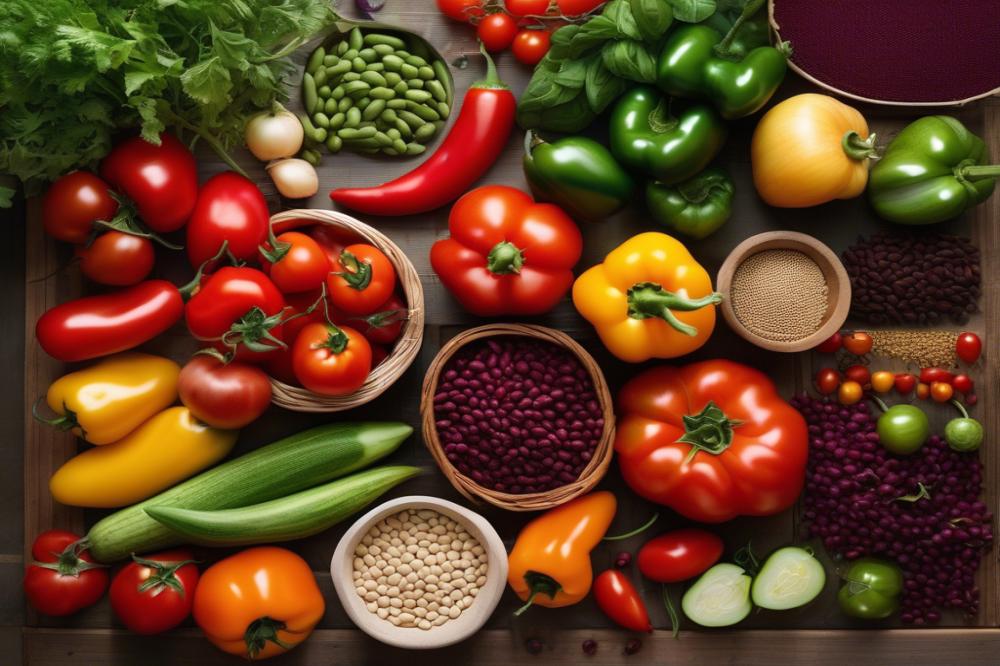Introduction
Tomato gardening has become a beloved hobby for many people around the world. The bright red fruit is not only delicious but also versatile in the kitchen. Growing your own tomatoes can be rewarding, providing a sense of accomplishment and enhanced flavors that store-bought options often lack. However, maintaining healthy plants requires careful attention. This is where the practice of pruning comes into play.
Healthy plants yield more fruit and thrive better in the garden. Proper care for your tomato plants is essential for achieving a plentiful harvest. By focusing on various aspects of plant care, gardeners can improve tomato growth significantly. Good management practices help prevent diseases and pests that could harm the plants. Strong, vigorous vines lead to greater fruit production and an overall better gardening experience.
Among the many techniques that aid in garden maintenance, pruning stands out as a critical practice. This involves cutting away dead or overgrown branches to promote healthy growth. Clever pruning techniques can enhance vine management and allow for more sunlight to reach the fruit. Performing this important task can keep tomato health in check while also boosting yield improvement. In the world of organic gardening, pruning adds to holistic approaches to growing crops, particularly during the active summer gardening months.
Understanding pruning tomatoes


Definition of Pruning in the Context of tomato plants
Pruning refers to the careful removal of specific parts of a tomato plant. This includes cutting off unwanted branches, leaves, or suckers. Making these cuts helps guide the growth of the plant. Pruning techniques allow gardeners to shape the tomato plant for better sunlight exposure and airflow. A balanced plant will be healthier and more productive.
Benefits of Pruning for tomato health and Growth
Healthy tomato growth flourishes with proper pruning. It enhances fruit production by redirecting the plant’s energy. Fewer but stronger branches can lead to better yields. Removing excess foliage also improves airflow. This action significantly aids in disease prevention, as moisture buildup can cause rot and fungal issues. It helps keep the plant focused on maturing blossoms into ripe tomatoes.
Impact of Pruning on plant care and Maintenance
Effective garden maintenance involves regular checks and trims of tomato plants. This vital practice supports vine management, which is essential in organic gardening. By removing dead or diseased parts, the overall plant health increases. Not only does this process improve yield, but it also simplifies summer gardening tasks. A well-pruned plant is often easier to harvest from and maintain. A little effort goes a long way in creating strong tomato plants.
Pruning Techniques


pruning tomatoes involves various methods. Each method plays a vital role in ensuring plant care throughout the growing season. Familiarity with these techniques helps gardeners improve fruit production and manage the health of their plants.
Different Methods of Pruning Tomatoes
Suckering, topping, and thinning are effective pruning techniques. Suckering means removing the small shoots that grow from the leaf joints. This practice encourages energy to focus on the main stem and larger fruits. When suckers are left on, they can drain resources from the fruit. It’s best to do this when suckers are young and easy to manage.
Topping refers to cutting off the top of the main stem. This technique is useful to control plant height and promote bushier growth. Doing this helps improve air circulation and light exposure in the plant. In turn, this contributes to better tomato growth. Timing is essential here; topping usually occurs once the plant reaches a certain height, typically several weeks after planting.
Thinning involves selectively removing certain stems or branches. This method reduces overcrowding and allows for more even sunlight distribution. Dense foliage can trap moisture, increasing the risk of disease. Thinning can be done throughout the growing season as needed.
When and How to Apply These Techniques
Applying these pruning techniques at the right time is crucial for optimal results. Early in the season, focus on suckering. Regularly check the plants for new suckers so they do not become too large. As summer gardening progresses, consider topping if plants are towering over other garden spaces. This keeps everything neatly organized and allows the sunlight to reach lower branches.
Thinning can be done at various intervals. After a storm or a week of heavy rain, inspect for crowded areas. Maintaining good vine management practices not only supports plant health but also helps in disease prevention. A well-pruned tomato plant can improve yield and contribute to a more fruitful harvest.
Engaging in these techniques can make a significant difference in the garden. Garden maintenance becomes easier with these practices. Healthy tomato plants lead to increased fruit production, resulting in a bountiful harvest. Make these pruning techniques a part of your organic gardening routine for the best results.
Enhancing Tomato Growth Through Pruning


Regular pruning plays a critical role in enhancing tomato growth. By selectively removing certain parts of the plant, gardeners can encourage healthier and more vigorous tomato plants. This process not only improves air circulation but also allows sunlight to reach more leaves. Healthier plants can devote more energy to fruit production. Timely pruning techniques help in maintaining the overall health of the tomato plant.
Improvement in yield is another significant benefit of pruning. Studies have shown that properly pruned tomato plants often produce more fruit than those left untouched. When excess foliage is trimmed, energy is redirected towards developing larger and tastier tomatoes. A well-maintained garden not only looks appealing but also promotes higher yields through careful management practices.
Vine management is essential for optimal tomato growth. Proper pruning helps maintain the structure of the plant, preventing it from becoming overgrown and tangled. This arrangement leads to better access for watering and nutrient delivery. Additionally, it aids in disease prevention by allowing for better air circulation, reducing the chances of fungal infections. Organic gardening practices thrive on such methods, promoting stronger plants in summer gardening seasons.
Disease Prevention and Pruning
Regular pruning plays a significant role in reducing the risk of disease in tomato plants. By cutting back overgrown areas, gardeners promote better air circulation around the leaves and stems. Good air flow is essential for keeping moisture levels down, which helps to prevent fungal infections. Without proper airflow, damp environments can create the perfect breeding ground for pests and diseases.
Sunlight penetration is another critical factor for healthy plant growth. Shading from dense foliage can block sunlight from reaching lower leaves. With enough light exposure, plants can photosynthesize efficiently, leading to healthier growth and improved fruit production. Tomato plants thrive when their lower parts receive adequate light, and pruning helps achieve this balance.
Pruning Strategies for Organic Gardening
Effective pruning techniques can enhance the overall health of tomato plants, particularly in organic gardening. Focus on removing suckers, the small shoots that grow between the main stem and branches. These can drain energy meant for fruit development. Besides removing suckers, it is crucial to thin out crowded clusters of leaves. This allows sunlight to reach more parts of the plant, resulting in yield improvement.
Consider timing your pruning efforts during the early morning or late afternoon. This practice minimizes stress on the plants and helps them recover more quickly. During summer gardening, consistency is key. Frequent checks for dead or yellowing leaves can lead to better plant care. Eliminating diseased foliage promptly prevents the spread of problems throughout the garden.
A well-maintained vine also leads to better overall productivity. When pruning tomatoes, be sure to keep an eye on the plant’s structure. Maintain a clean and tidy appearance, as this can help discourage pests. Utilization of proper pruning techniques brings not just health, but also a sense of order to any garden.
Pruning and Summer Gardening
Summer gardening brings both excitement and challenges. High temperatures can stress tomato plants, leading to problems that affect their health and fruit production. Gardeners often face issues such as wilting, pests, and diseases. Regular pruning offers practical solutions to these challenges.
One significant benefit of pruning is effective vine management. As plants grow, they can become bushy and overcrowded. Removing excess leaves and small suckers enhances air circulation, which is vital during hot months. This increased airflow helps to prevent diseases, such as blight, by reducing moisture on leaves. Managing the growth of vines allows the plant to focus its energy on producing fruit.
The Relationship Between Summer Pruning and Ongoing Plant Care
Healthy plants require consistent care. Pruning techniques, when applied during summer, contribute to ongoing plant care. Trimming away dead or diseased branches encourages better overall health. Removing unhealthy growth not only improves appearance, but it also boosts the plant’s ability to thrive. This proactive approach helps in maintaining strong plants that resist stress.
In the realm of organic gardening, minimal intervention is key. By regularly pruning, gardeners can reduce the need for pesticides, as healthier plants are naturally more resilient. Observing plants closely during this process aids in understanding their needs. Tending to tomato plants with an attentive hand promotes growth and sustainable practices.
Long-term Benefits of Regular Pruning Throughout the Growing Season
Long-term benefits from consistent pruning are evident as summer unfolds. Improved yield is one major advantage. By allowing more sunlight to reach the fruits, plants can produce larger and tastier tomatoes. This practice ensures that every branch contributes to overall growth.
Thinking ahead also plays a critical role. Healthy plants in summer will likely outperform those that are not pruned. The process of pruning regularly sets the stage for robust growth into the fall. More importantly, it fosters a rewarding gardening experience, as the fruits of one’s labor are seen through increased harvests.
Adapting care practices is essential for successful summer gardening. By embracing pruning as part of routine garden maintenance, gardeners enhance their overall efforts. This simple act paves the way for a vibrant garden and a bountiful tomato harvest.
Final Thoughts on Pruning for Tomato Health
Regular pruning plays a crucial role in the cultivation of tomatoes. This simple yet effective technique helps promote better air circulation within the plant. Improved airflow can significantly reduce the risk of diseases that thrive in humid environments. Shaping the plants properly also allows sunlight to reach more parts of the tomato, which enhances fruit development.
Gardeners should understand that each cut made can lead to healthier and more productive plants. By removing excess leaves and suckers, one can encourage the plant to focus its energy on producing tasty tomatoes instead of unnecessary growth. Proper plant care strategies, such as pruning, are vital for achieving optimal tomato growth.
Consider the benefits outlined throughout this article as you tend to your garden. Embracing these practices will ultimately lead to larger harvests and less frustration. When you see the positive changes in your plants, you’ll recognize the value of routine pruning. Every gardener can enjoy the rewards with a little effort.
So pick up those gardening shears and start trimming! Your tomatoes will thank you, and your garden’s success will be evident. Happy gardening!



